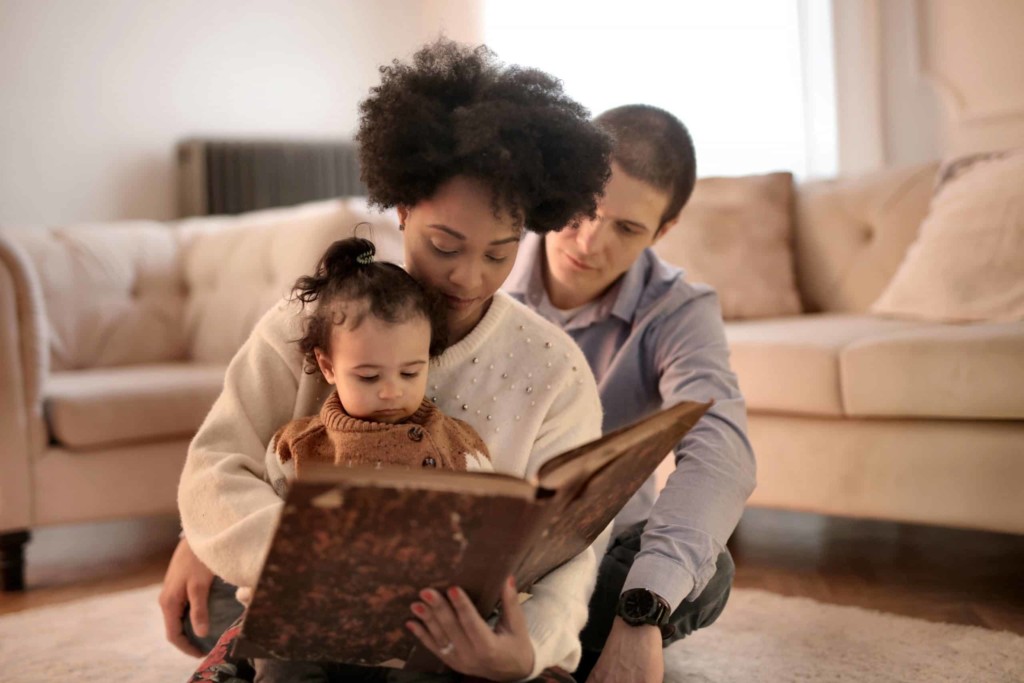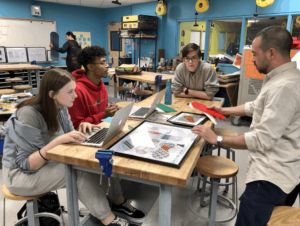What is Really Keeping Us Apart Right Now? Bringing Home and School Together

By: Jennifer Ghidiu
Teaching and learning, for me, has always been a sort of perpetual motion machine- the act of teaching feeds me energy, just as much as it takes. And there is no teaching without learning. The more vexing the puzzle, the more interested I am. I feel the same way about parenting- it’s a beautiful journey, a rich opportunity for teaching and learning, all bound up in love. For all of us who enjoy a challenge, we’re living in the right time. Like yours, my children have been home with me in some approximation of teaching and learning for the last few months. We are all learning every day.
Whether you are an educator, a parent, or both, you deserve a hearty congratulations. This is uncharted territory, and we are all working so much harder than we thought we could—and let’s be honest, it was hard work on a good day. Public education is a system that constantly dances on the edges of what’s possible, a system where trauma and triumph are two sides of the same coin. A supremely unbalanced system, where we all start at different places with wildly different sets of resources, yet with the expectation we all reach the same outcomes on the same timeline somehow.
For a long time before crisis schooling and staying at home, I worked in education for about fifteen years- as a classroom teacher, a school leader, a coach and consultant, and on the national team of an education nonprofit, Big Picture Learning. I would say that “education redesign” has rolled off my tongue pretty easily for a long time. I was always very proud of the work that I did in these roles, completely dedicated to catalyzing change through thoughtful school design, student-centered projects, building solid relationships with young people and their families. And I still think that probably is the best work happening in education. But I crossed over into work with the National Parent Leadership Institute about a year ago and shifting my focus on learning communities and social change to the perspective of family has pushed my thinking about teaching and learning and the role of schools in relationship to family. My role with NPLI allows me to blend my love for family learning and my passion for equity into my work every day. NPLI has a small, but mighty national team, and we work with driven parent leaders across the country- in rural, suburban, and urban communities, across differences of race, income, and language. Extending that, doing this work in the shadow of COVID-19, and doing it while also managing learning at home for my own children has continued to push that thinking. I’m in listening sessions with families across the differences of geography, race, age, language, and income, and they are raising these questions. They are not questions about the best online pedagogy or digital platforms, they are urgent concerns voiced as a call for real answers:
“Where can I go to get my daughter glasses now?” From the mother who was in process with the school to help her daughter get what she needed in order to succeed in reading, to be able to see clearly. The resources that schools were able to offer to families in partnership with service organizations are not available to her now, but they are still needed. How can we mobilize these needed resources?
“Why is the laptop pickup spot in that part of town?” Inequity in access to technology is one of the most glaring issues for crisis schooling. And for districts and schools that are able to get them to families, they sometimes fall just short of success when the only way parents can access them is traveling across town, and public transit poses its own risks. How are we designing solutions that really meet families’ needs?
“How do I help my six year old learn so late at night?” A mother who is an essential worker has limited childcare options to begin with and worries what to do when her young child is too tired to continue learning at the end of her long shift when her mom-teacher is finally available. What can we do for our youngest children when there’s little opportunity for parents to teach them?
“When will the teachers ask how we’re doing with learning at home?” Parents everywhere are asking how schools are continuing to design learning-at-home for the future without asking for feedback on what’s working now. With learning at home, we should be moving from a day-to-day stopgap approach to a more long-term one. Some communities are anticipating being back learning at home in the fall or winter. Parents have become the crisis school teachers, with little to no training, and are the ones seeing every day if and how children are learning, but most districts are missing out on the opportunity to get their inputs. How will schools continue to get better at this learning at home approach if they’re not inviting feedback from students and families on what’s working and not working right now?
Often at NPLI, in our work with organizations, agencies and system leaders, we ask them to take off their service hat and put on their parent hat. Some of my closest friends and colleagues are educators who often share their frustration at the learning opportunities for the children in their home– schools aren’t open to the input of parents around what should be prioritized. Or they feel tokenized by the education system when it comes to engagement or input. I often frame my experience shifting from an educator perspective to a parent perspective within the education system as coming to understand the difference between “engagement” and “partnership.” I’m “engaged” when the school can check a box that they sent something home, asked me to contribute to a fundraiser, shared mandated information about Title I. I’m in a “partnership” when I’m invited to give voice on how my child learns, about the school culture, about how communication happens.
In some way, the education system seems designed to draw a distinction between HOME and SCHOOL. The SCHOOL decides what, how, and when to learn, and the HOME is meant to support that learning through engaging with the school’s plan. Honoring the learning that happens at home is not the focus of the school, nor the origin of students’ education plans. But learning is quite literally happening exclusively at home right now, so that seems like the best place to look to see how it’s going. Families are there, waiting to hear from us. Waiting to share their stories, waiting for us to ask the most important questions.
“How are you?”
“What do you need?”
“How are we doing?”
“What’s next?”
We may be physically more distant than we’ve ever been, but we are also more united in the challenges we face. It’s the perfect time to reach out and connect around what matters in learning for us all.
For more, see:
- Building Community and Camaraderie, Even When Schools are Closed
- Preparing for the Future: Career and College Ready
- Creating the New Way Forward
Jennifer Ghidiu is a Civic Partnership Designer at National Parent Leadership. You can find her on Twitter at @JenniferGhidiu.
Stay in-the-know with innovations in learning by signing up for the weekly Smart Update.
We know that educators and leaders have spent the last couple of months scrambling to meet the immediate needs of learners in their community. Thank you to each and every one of you for everything you’ve done to make the best out of this challenging situation. Now that the end of the school year is here, we’re shifting our Getting Through series from stories and advice to support remote learning or long term closures, to getting ready for the complex work of reopening schools this fall.
Interested in contributing to this campaign? Email your stories and ideas to [email protected] or tweet using #gettingthrough to participate!







0 Comments
Leave a Comment
Your email address will not be published. All fields are required.